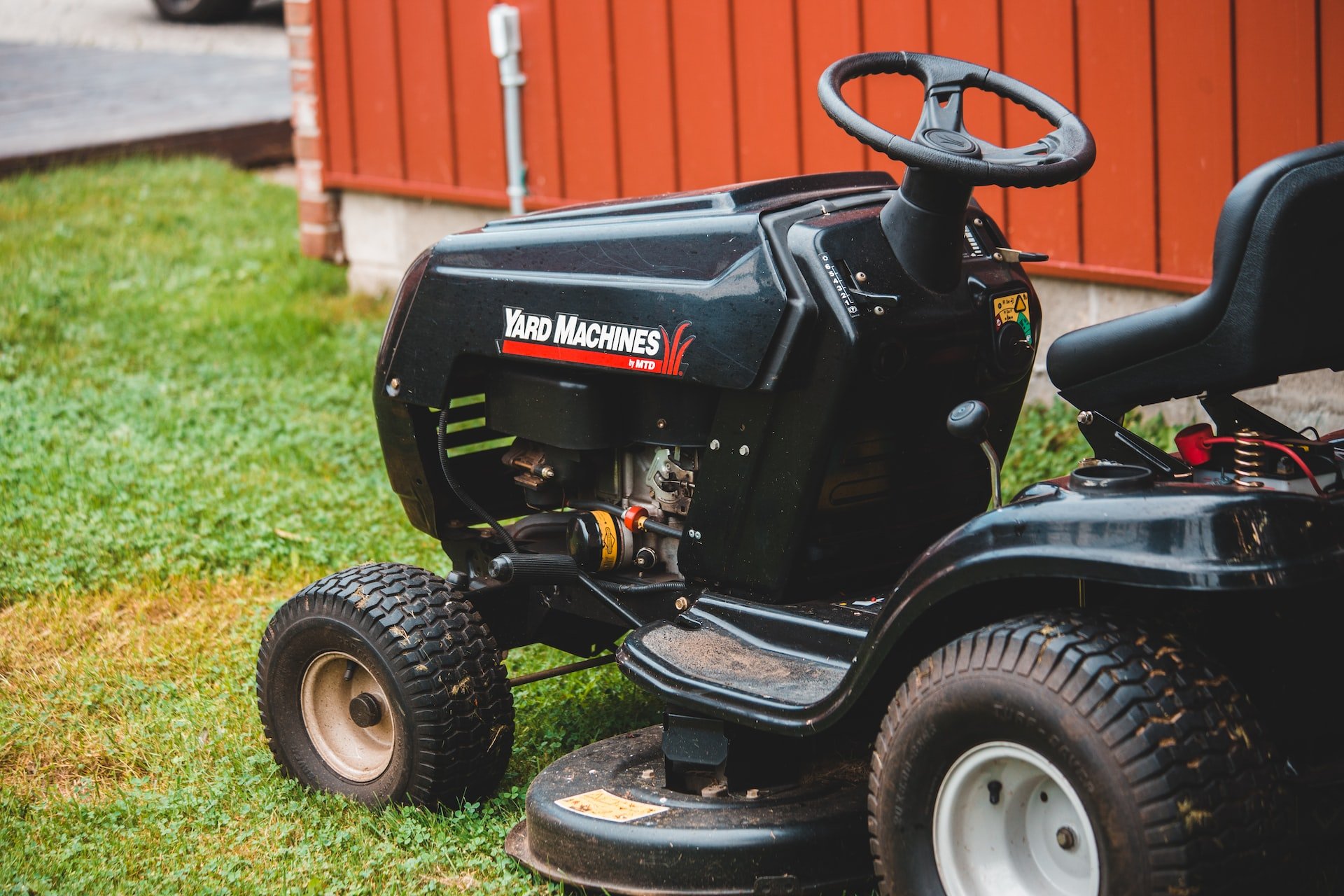It’s important to know how to unflood a riding lawn mower engine. With proper maintenance and operation, this is an atypical situation. However, when it does happen you’ll need to know how to correct it.
What is a Flooded Engine?
A flooded engine occurs when a combustion chamber receives too much fuel, or too high of a concentration of the fuel/air mix.
When this occurs, the engine cannot fire as the mixture is too rich. An engine requires an appropriate mix of fuel to air. That’s the job of the carburetor.
If too much fuel enters the combustion chamber, this mix gets off balance and the engine can no longer run or fire until it is corrected.
How Does an Engine Get Flooded?
Normal small engines typically get flooded by pushing the primer bulb too many times. Each subsequent push of the primer bulb delivers a small amount of fuel into the combustion chamber to ease ignition.
However, too many pushes will deliver too much fuel and upset the mixture.
That’s easy to understand, but most riding lawn mowers don’t have a primer bulb. So how do these machines get flooded?
The typical cause is user error regarding the choke.
The choke is a valve on the carburetor that limits the air intake. This causes a minimally fuel rich condition to aid in starting a cold engine.
For whatever reason, if the engine doesn’t start up right away, the average user just keeps cranking on the engine with the choke engaged.
Similar to the primer bulb, every pulse of the engine delivers a small amount of minimally rich fuel/air mix to the combustion chamber. If it’s not igniting, that minimally rich condition grows until the engine is vastly rich and eventually flooded.
Another Cause is the Air Filter
If the air filter is plugged with debris or animal nest material, this further reduces the air intake. This also creates a fuel rich condition which is further exacerbated by using the choke.
Or, a Faulty Carburetor
If a carburetor float is not working correctly, it won’t shut off fuel to the engine. Even while it’s not in use, fuel can possibly keep draining into the combustion chamber. Eventually, this fuel will seep past the rings and dilute the engine oil, causing all sorts of further damage.
How to Unflood a Riding Lawn Mower Engine
Now that we understand the dynamics of a flooded engine and what causes it, how do we fix it?
Luckily, this is a no-cost, simple fix. We just need to remove the extra fuel from the combustion chamber.
The easiest method for doing so is to remove the spark plug. Make sure to not only remove it from the block, but also disconnect it from the boot.
Once the plug is removed, we simply turn the engine over with the ignition key.
Obviously, this won’t start the engine without the spark plug, but the extra fuel from the combustion chamber will be removed via the spark plug hole.
It’s recommended to blow the area around the spark plug out with some compressed air so dirt or debris does not enter the combustion chamber.
Another Method of Unflooding
If you can’t access the spark plug easily or don’t have a spark plug socket, you can still unflood the engine. This takes a little bit longer, but it still works.
Open the throttle all the way and turn the choke completely off. We want as much air entering the combustion chamber as possible to create a lean condition.
This works in the opposite manner of what caused us to flood the engine in the first place. With each subsequent crank of the engine, the combustion chamber will gradually get more and more lean.
Eventually, it will reach the appropriate air/fuel mix and will fire.
Safety Considerations
In the second method, it is possible to create a backfire, so it’s important to be prepared for that possibility. As the engine is cranking out the extra fuel, it has to go somewhere.
That somewhere is through the exhaust valve and out the muffler. This un-ignited fuel can sit there, ready to ignite under the right conditions.
When the engine does finally fire, it is possible to ignite the unspent fuel in the muffler, causing a backfire.
Also, be cognizant of the time spent cranking with the starter motor. It’s super easy to burn one out by cranking too long. If you’re cranking with the first method, it should only take a few seconds to clear the combustion chamber.
With the second method, it can take considerably longer. So make sure to only crank for short bursts and then let the starter motor cool down.
Recap
Alright so in this article we learned what a flooded engine is, what causes it, and a couple of methods to fix it. If I forgot any useful information, please let me know in the comments below
As an Amazon Associate I earn from qualifying purchases.

One thought on “How to Unflood a Riding Lawn Mower Engine”